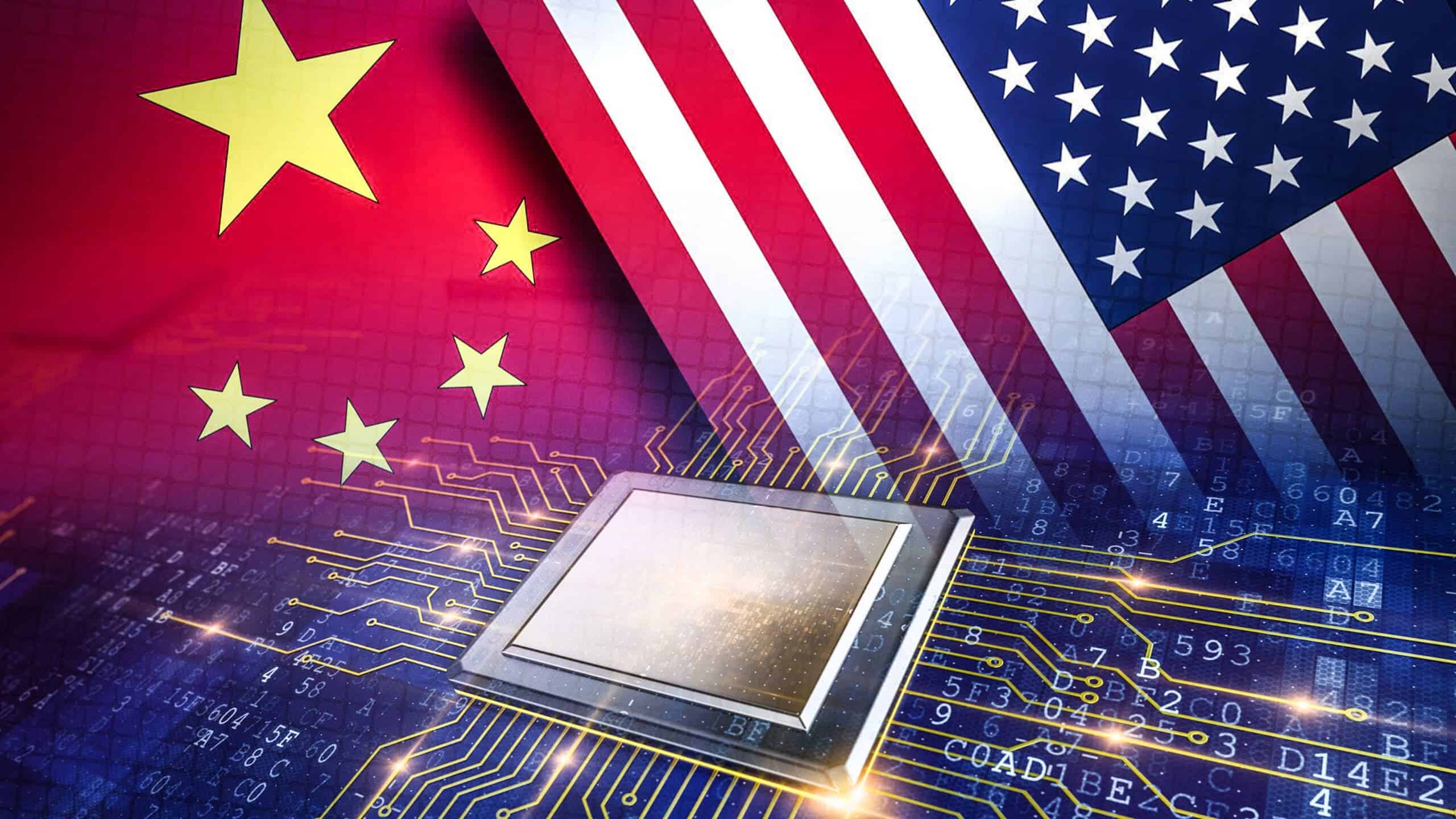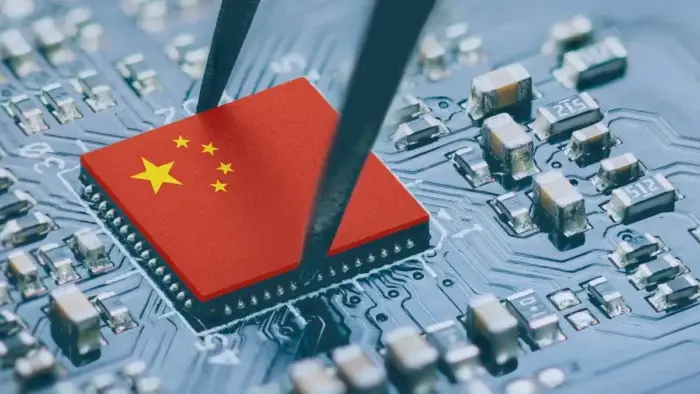The global landscape of artificial intelligence (AI) technology is a complex one, interwoven with national security concerns and ongoing trade tensions. A recent development highlights this complexity: the reported acquisition of advanced Nvidia AI chips by Chinese entities, despite expanded U.S. restrictions on such exports.
Navigating the Labyrinth: AI Chip Sales to China Despite Export Restrictions

The Evolving Export Landscape
In November 2023, the U.S. government implemented stricter export controls aimed at limiting China’s access to high-performance AI chips. These chips are critical for advancements in various fields, including facial recognition, autonomous vehicles, and advanced weaponry. The rationale behind the restrictions centers on national security concerns. With the U.S. government expressing anxieties about potential military applications of the technology in China.
Circumventing the Barriers?
However, recent reports by Reuters suggest that these restrictions may not be entirely watertight. According to a review of bidding documents, ten Chinese government-affiliated entities, including the Chinese Academy of Sciences and research institutes, managed to acquire Nvidia‘s advanced AI chips embedded within server products. These server products originated from well-respected manufacturers like Supermicro, Dell Technologies, and Gigabyte Technology. The purchases reportedly occurred between November 2023 and February 2024, a timeframe that partially overlaps with the implementation of the stricter export controls.
Unveiling the Mechanism
The exact details of how these acquisitions took place remain unclear. The transactions were reportedly facilitated by eleven, lesser-known Chinese retailers, raising questions about the transparency of the supply chain. One possibility is that these retailers possessed stockpiles of Nvidia chips acquired before the expanded restrictions took effect. Another possibility, suggested by some experts, is that there might have been diversion of the chips within the supply chain. Potentially without the knowledge of the original manufacturers. Limited visibility into downstream supply chains, where components are often bought and sold multiple times before reaching their final destination, can create opportunities for such diversions.
Responding to the Leak
So, the reported chip leak has attracted the attention of the U.S. Commerce Department, which is reportedly investigating the transactions for potential violations of export control rules. Violations of these rules can carry significant consequences, including hefty fines and even imprisonment.
Nvidia’s Stance
Nvidia, the manufacturer of the chips in question, has maintained that the products included in the tenders were exported and commercially available before the expanded restrictions were imposed. Their position suggests that they believe the sales did not constitute a violation of export control regulations.
The Fallout and its Implications
This situation underscores the challenges of enforcing export controls in a globalized economy, where complex and often opaque supply chains can provide opportunities for circumvention. The incident also highlights the ongoing tensions surrounding AI technology development. And the strategic importance governments place on controlling access to this rapidly advancing field.
Looking Forward: Mitigating the Risks
The story raises several key questions that require further exploration. Can existing export control regulations be strengthened to address potential loopholes exploited through obscure supply chains? What role can manufacturers play in ensuring responsible and compliant end-use of their products? Additionally, fostering international dialogue and cooperation on responsible AI development could contribute to mitigating potential security risks associated with the technology.
Beyond the Headlines: The Broader Context
Also, it’s important to consider this incident within the larger context of the U.S.-China trade relationship. Technological innovation, particularly in the realm of AI, is seen by many as a crucial battleground in the competition between the two superpowers. The export restrictions represent one tactic in this ongoing contest, and the effectiveness of such measures will depend on their ability to adapt to evolving supply chains and potential workarounds.
A Delicate Balance: Security Concerns and Technological Advancement
The desire to safeguard national security is a legitimate concern. But it’s also vital to strike a balance to avoid hindering overall technological progress. Open collaboration and information sharing within a framework that addresses security anxieties could be a more sustainable approach in the long run.

The Ripple Effects: Potential Consequences and the Future of AI Development
Additionally, the reported sale of Nvidia AI chips to Chinese entities has the potential to trigger a cascade of effects. Impacting various stakeholders and shaping the future trajectory of AI development.
Impact on the U.S.:
- Eroding Technological Advantage: The success of Chinese entities in acquiring these chips, if confirmed as a violation, could signify a potential erosion of the U.S.’s lead in AI chip technology. This could have broader implications for national security and economic competitiveness.
- Scrutiny of Export Control Mechanisms: The incident is likely to trigger a reevaluation of existing U.S. export control mechanisms. Policymakers may consider stricter regulations or explore alternative strategies to safeguard sensitive technology.
Impact on China:
- Accelerated AI Development: Access to these advanced chips could accelerate China’s progress in AI research and development. This could potentially narrow the gap between the U.S. and China in this critical technological domain.
- Strained Relations with the U.S.: If the chip sales are deemed a violation, it could further strain U.S.-China relations. Potentially leading to retaliatory measures or increased trade tensions.
The impact on the Global AI Landscape:
- Supply Chain Uncertainty: The incident highlights vulnerabilities within global supply chains, raising concerns about the reliability and transparency of component sourcing for AI hardware. This could prompt increased scrutiny and potential disruptions within the global AI ecosystem.
- Geopolitical Competition in AI: The episode underscores the growing geopolitical competition surrounding AI development. Countries may be incentivized to invest more heavily in domestic AI research and production. Potentially leading to a fragmented and siloed global AI landscape.
The Road Ahead: Fostering Responsible AI Development
Also, the ongoing saga of AI chip sales to China underscores the need for a more nuanced and collaborative approach to AI development. Here are some potential avenues to explore:
- International Cooperation: Fostering international dialogue and collaboration on responsible AI development could help establish global norms and best practices for managing the proliferation of this powerful technology. This could involve joint efforts to develop robust export control frameworks and promote transparency within supply chains.
- Focus on Open Science: Encouraging open science initiatives within the AI research community could accelerate innovation. While mitigating potential security risks associated with proprietary research conducted behind closed doors. Sharing research findings and methodologies could foster a more collaborative and trustworthy global AI ecosystem.
- The Role of Private Industry: Manufacturers of AI hardware can play a crucial role in ensuring responsible end-use of their products. Implementing robust customer vetting procedures and establishing clear terms of sale can help mitigate the risk of their technology being diverted for unintended purposes.
Conclusion: A Shared Responsibility
So, the responsible development and deployment of AI technology hinge on a collective effort from governments, industry leaders, and international organizations. By fostering collaboration, transparency, and open communication, stakeholders can navigate the complexities of the global AI landscape and ensure that this transformative technology is harnessed for the benefit of all.





